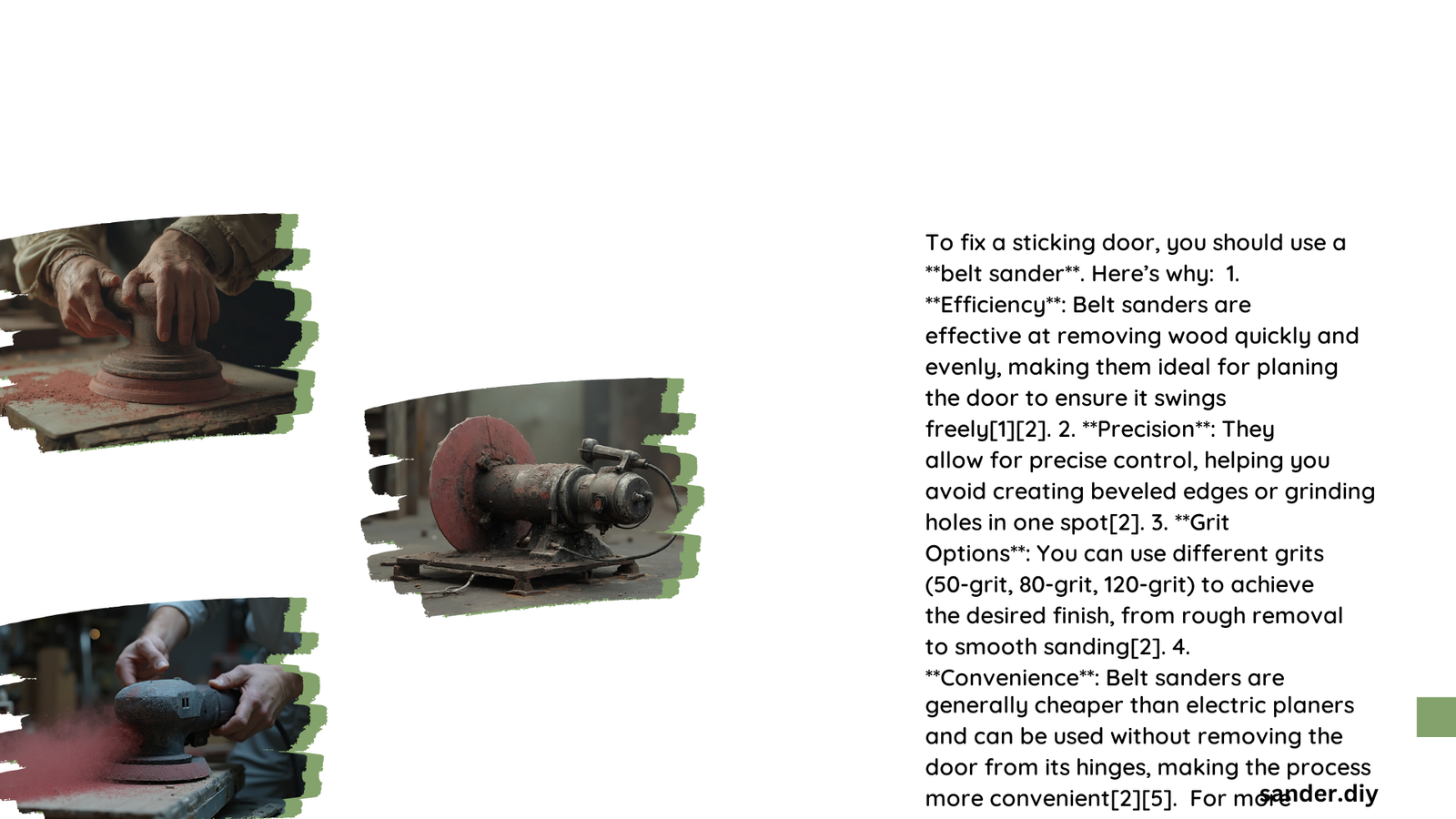Dealing with a sticking door can be frustrating, but with the right sander and technique, you can resolve this common household issue efficiently. Homeowners and DIY enthusiasts often struggle to identify the precise tool for smoothing door edges without causing damage. This comprehensive guide will walk you through selecting the optimal sander, understanding wood removal techniques, and achieving a perfectly functioning door.
What Makes a Door Stick?
Doors can stick due to various reasons:
– Humidity changes
– Loose hinges
– Wood swelling
– Uneven frame alignment
Why Choose an Orbital Sander?

An orbital sander provides:
– Precise control
– Even material removal
– Minimal risk of over-sanding
– Smooth finish capabilities
Recommended Sander Specifications
| Feature | Recommended Specification |
|---|---|
| Type | 5-inch Orbital Sander |
| Power Rating | 2.5-3.0 amps |
| Dust Collection | Built-in or vacuum attachable |
| Pad Size | 5-inch standard |
How to Select the Right Sandpaper?
Selecting appropriate sandpaper is crucial for effective door edge correction:
- Coarse Grit (50-80): Initial material removal
- Medium Grit (120): Smoothing primary surface
- Fine Grit (220): Final finishing
What Preparation Steps Are Necessary?
Door Removal Process
- Identify sticking areas using chalk or carbon paper
- Remove door from hinges
- Clean work surface
- Inspect hinge alignment
How to Sand Door Edges Effectively?
Sanding Technique
- Maintain consistent, light pressure
- Move sander in smooth, even strokes
- Check progress frequently
- Avoid creating uneven surfaces
What Common Mistakes Should You Avoid?
- Over-sanding
- Applying excessive pressure
- Neglecting dust collection
- Ignoring underlying structural issues
Pro Tips for Perfect Door Adjustment
- Use dust mask and safety glasses
- Work in well-ventilated area
- Test door fit after minimal sanding
- Consider professional help for significant misalignments
Maintenance Recommendations
- Regularly check door alignment
- Apply wood sealant after sanding
- Monitor humidity levels
- Lubricate hinges annually
Final Recommendations
For most homeowners, a 5-inch orbital sander with variable speed settings and dust collection will provide the best results. Invest in quality sandpaper and take your time during the process.
Warning: If door issues persist after sanding, consult a professional carpenter to assess potential structural problems.
Tools You’ll Need
- Orbital sander
- Sandpaper (50, 120, 220 grit)
- Safety glasses
- Dust mask
- Hammer
- Screwdriver
Estimated Project Time
- 1-2 hours for most standard doors
Skill Level
- Beginner to Intermediate
Cost Range
- $50-$150 for complete tool and material setup
Reference:
– Handyman Connection of Lincoln
– Twin Civet Door Repair Guide
– Young House Love DIY Tutorials
